It’s…”Hard to Turn a Blind Eye”…To La Buse’s connections to “Oak Island”!
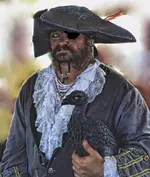
Olivier Levasseur’s life as a pirate started out quite unfortunately when he was hit in one eye from a probable blast, shot at his Boarding Party by a Blunderbuss or Swivel Gun.
Later, The Buzzard’s fortune would increase immensely from his luck at raiding and plundering helpless ships.
Some of his connections to Oak Island appear to be beyond coincidental.
At an early life in France, Levasseur was trained in the ways of his wealthy family, studying Freemasonry, the Courts, and several languages, including being a scholar in Greek and Latin.
After his education, he became a young officer in the Navy and participated in Queen Anne’s War (1702—1713).
This may have led him to Acadia.
During time spent in Acadia, Levasseur could have helped build Fort Dauphin 1713, Cape Briton Isle, possibly under the Governor
Jean-Baptiste Hertel de Rouville (26 October 1668 — 30 June 1722).
It was stated that Levasseur refused to return his ship to France after the war and proceeded to become a Privateer and then a Pirate.
La Buse may have used the familiar Oak Island as a base for his noted plundering of English, Portuguese. and then French ships, along the coast of Nova Scotia.
It has been documented that La Buse joined the famous pirates Benjamin Hornigold and Edward Teach (Blackbeard) in the Caribbean when he found the plundering of New England Fishing Ships and local Merchant Ships unprofitable.
While in the Caribbean he would have been aware of the escapades of Jean Levasseur his deceased countryman, who was a Civil Engineer, Governor of Tortuga, and referred to as Pirate King of Tortuga.
It questions whether Olivier and Jean Levasseur were related and if Olivier had possibly heard tales at home of Jean’s episodes on Tortuga, up until Jean’s death in 1654.
Jean being an Engineer and with the help of Huguenot companions who fled France from Catholic persecution in mid-17[SUP]th[/SUP] Century, along with island slaves, may have built what was called a Pirate’s Bank in Tortuga.
This Pirate’s Bank along with one rumored to be in Haiti, showed similar designs to the Oak Island Money Pit and Flood Tunnels.
Probably La Buse knew of these designs and could have used them with his constructions for Oak Island.
From the Caribbean it was recorded in 1720’s that La Buse moved with the slave trade to West Africa.
Ferrying slaves was sometimes used as a front by Pirates in order to legitimately cruise the oceans while looking for Prey.
"It was during one of La Buse’s sailings that he perpetrated one of piracy's greatest exploits: the capture of the Portuguese great galleon
Nossa Senhora do Cabo (Our Lady of the Cape) or
Virgem Do Cabo (The Virgin of the Cape), loaded full of treasures belonging to the
Bishop of Goa, also called the
Patriarch of the East Indies, and the
Viceroy of Portugal, who were both on board returning home to
Lisbon. The pirates were able to board the vessel without firing a single
broadside because the
Cabo had been damaged in a storm and to avoid capsizing the crew had dumped all of its 72 cannon overboard, anchored off
Réunion island to undergo repairs."
It was after securing this fortune that Levasseur likely decided it was time to transfer his plunder closer to France while attempting to arrange or buy a French Pardon.
To protect himself from French prosecution he moved to Madagascar, to the town of Fort Dauphin (the only other town of this name outside of Canada).
Fort Dauphin was under the protection of the King of Madagascar, King Andriantsimitoviaminiandriana.
It was here in Madagascar that Olivier Levasseur derived his plans for “Oak Island”.
The problem…
The Best Laid Plans of Mice, Men and Pirates…Often Go Awry!
"In 1724, Levasseur sent a negotiator to the governor on the island of Bourbon (today Réunion), to discuss an
amnesty that had been offered to all pirates in the Indian Ocean who would give up their practice. However, the French government wanted a large part of the stolen loot back, so Levasseur decided to await further negotiations. While under the King of Madagascar’s protection he was tricked into boarding a ship and arrested and then taken to the French domain of
Saint-Denis, Réunion and hanged for piracy at 5 p.m. on 7 July 1730."





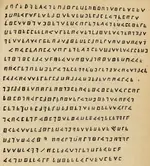
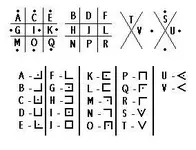

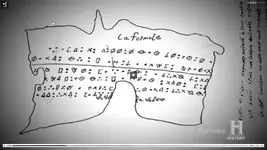
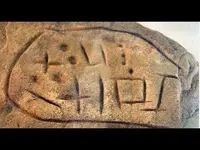

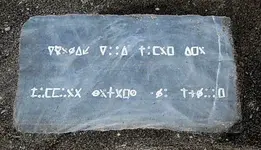
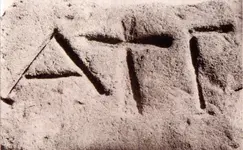

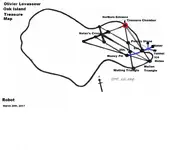

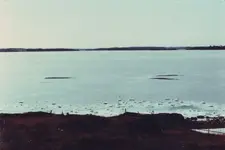



 ?
?